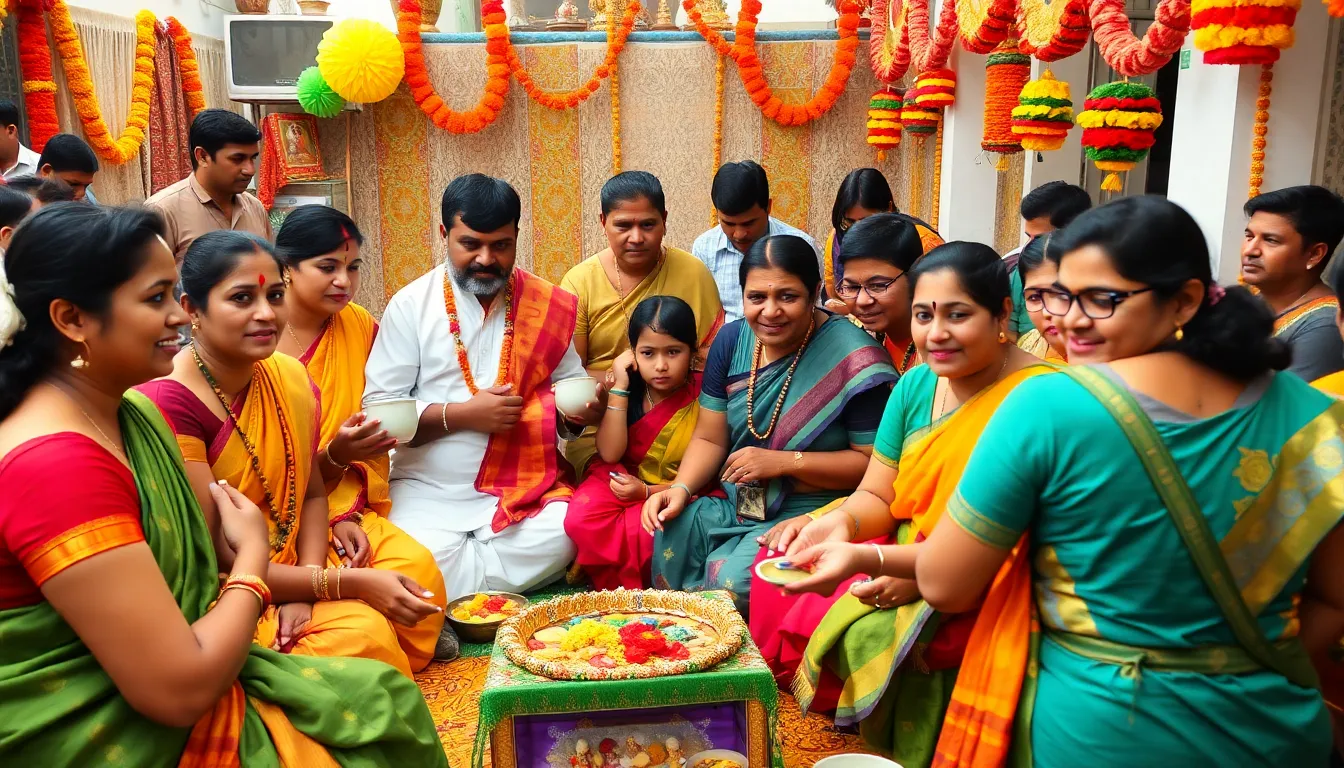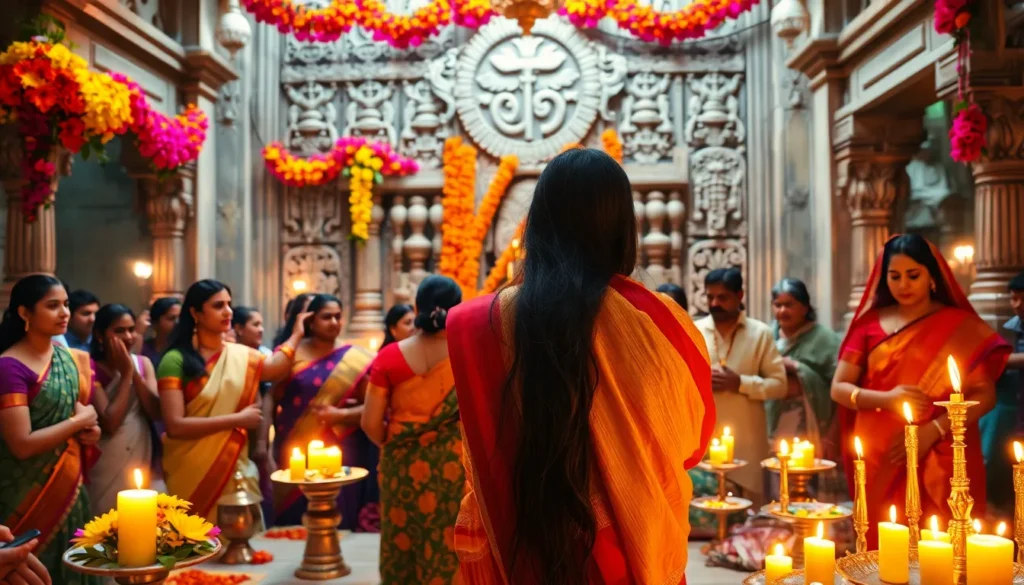Table of Contents
ToggleIn the vibrant tapestry of Indian philosophy, nishidhasagamam stands out like a quirky uncle at a family reunion—eccentric yet profoundly wise. This fascinating concept dives into the world of prohibitions and the art of navigating life’s no-nos. Ever wondered why certain actions are deemed taboo? It’s not just to keep you on your toes; it’s about understanding the deeper implications of choices and consequences.
Overview of Nishidhasagamam
Nishidhasagamam highlights critical insights into prohibitions and societal taboos in Indian philosophy. This concept delves into the reasoning behind actions deemed forbidden, illustrating the profound implications of choices and consequences.
Historical Background
Nishidhasagamam traces its roots to ancient Indian texts such as the Vedas and Upanishads. These texts provide foundational insights into societal structures and moral frameworks. Scholars argue that these early writings reflect the evolving understanding of ethics. Over centuries, interpretations of prohibitive norms adapted to align with cultural changes. Various philosophers contributed to these interpretations, enhancing the depth of this concept. Modern thinkers continue to explore its relevance, revealing its influence in contemporary discussions about ethics and morality.
Cultural Significance
Culturally, nishidhasagamam shapes societal norms in Indian communities. These prohibitions often reflect deeper values and philosophic teachings. The understanding of why certain actions are restricted fosters awareness and reflection among individuals. Many traditions view these prohibitions as essential for personal growth and social harmony. Festivals and rituals frequently embody the principles of nishidhasagamam, reinforcing collective identity. The ongoing discourse around this topic impacts modern ethical considerations and societal behaviors, enhancing its lasting significance in Indian culture.
Key Features of Nishidhasagamam

Nishidhasagamam encompasses several fundamental aspects that significantly contribute to its role in Indian philosophy. Ritual practices and symbolism frame its core understanding.
Ritual Practices
Rituals associated with nishidhasagamam serve to reinforce societal prohibitions. Festivals often highlight these rituals, connecting individuals to the collective cultural identity. Observing specific practices, such as fasting or abstaining from certain activities, fosters communal spirit. Performing these rituals cultivates a sense of discipline and self-awareness. Community engagement during these events deepens social bonds and collective responsibility.
Symbolism and Meanings
Symbolism within nishidhasagamam reflects deeper values embedded in society. Forbidden actions often represent cultural boundaries and moral lessons. Taboo subjects convey essential insights about societal expectations, urging individuals to ponder consequences. Each prohibition carries inherent meanings revealing what is socially acceptable. Exploring these symbols enhances understanding of personal and collective ethics, shaping behaviors in alignment with cultural norms.
Benefits of Nishidhasagamam
Nishidhasagamam offers numerous benefits that enhance individual lives and enrich community ties.
Spiritual Advantages
Spiritual growth emerges from the practice of nishidhasagamam. Learners develop a deeper understanding of themselves and their choices. The act of refraining from certain activities fosters introspection, encouraging individuals to explore their beliefs and motivations. Enhanced self-discipline becomes evident as practitioners engage in rituals that promote mental clarity and focus. Engaging with prohibitive norms helps followers cultivate a sense of moral responsibility and ethical living. Through these spiritual practices, individuals connect with higher ideals, leading to transformation and enlightenment.
Community Impact
Community cohesion strengthens through the embrace of nishidhasagamam. Shared rituals create a sense of belonging among group members. By observing prohibitions together, individuals simultaneously reinforce cultural values and traditions. This collective commitment nurtures bonds, fostering mutual respect and understanding. Festivals rooted in nishidhasagamam serve as platforms for community engagement, emphasizing collaboration and support. More importantly, adherence to these norms encourages individuals to reflect on their societal roles, fostering a culture of accountability and harmony within communities.
Challenges and Misconceptions
Understanding nishidhasagamam poses challenges, particularly in modern contexts where interpretations shift frequently. Individuals often misconceive its prohibitions as mere restrictions rather than insightful moral guides. Recognizing the necessity of these prohibitions helps clarify their purpose beyond societal norms.
Modern Interpretations
Modern interpretations of nishidhasagamam frequently diverge from traditional contexts. Contemporary thinkers analyze prohibitions through lenses of personal freedom and ethical relativism. Some view restrictions as outdated, arguing they limit individual expression. Adherents suggest these prohibitions foster deeper moral understanding, promoting reflection on personal choices. Digital platforms amplify these discussions, creating forums where diverse perspectives evolve continuously.
Cultural Appropriation
Cultural appropriation represents a significant concern related to nishidhasagamam. Misunderstandings arise when elements of this philosophy are adopted without context or respect for their origins. Practicing nishidhasagamam outside its traditional framework can dilute its intended meaning and impact. Authentic engagement with these concepts requires understanding their historical roots and significance. Awareness of cultural sensitivity promotes respectful dialogues that honor the depth of these prohibitions within Indian philosophy.
Nishidhasagamam remains a profound aspect of Indian philosophy that challenges individuals to reflect on the nature of prohibitions and their societal implications. By understanding the deeper meanings behind these restrictions, individuals can cultivate personal growth and ethical awareness.
As interpretations evolve, the relevance of nishidhasagamam continues to resonate within modern contexts, encouraging respectful dialogue about cultural practices. This ongoing exploration not only fosters a sense of community but also reinforces the importance of accountability and moral responsibility. Ultimately, engaging with nishidhasagamam enriches one’s understanding of both individual choices and collective values in society.





